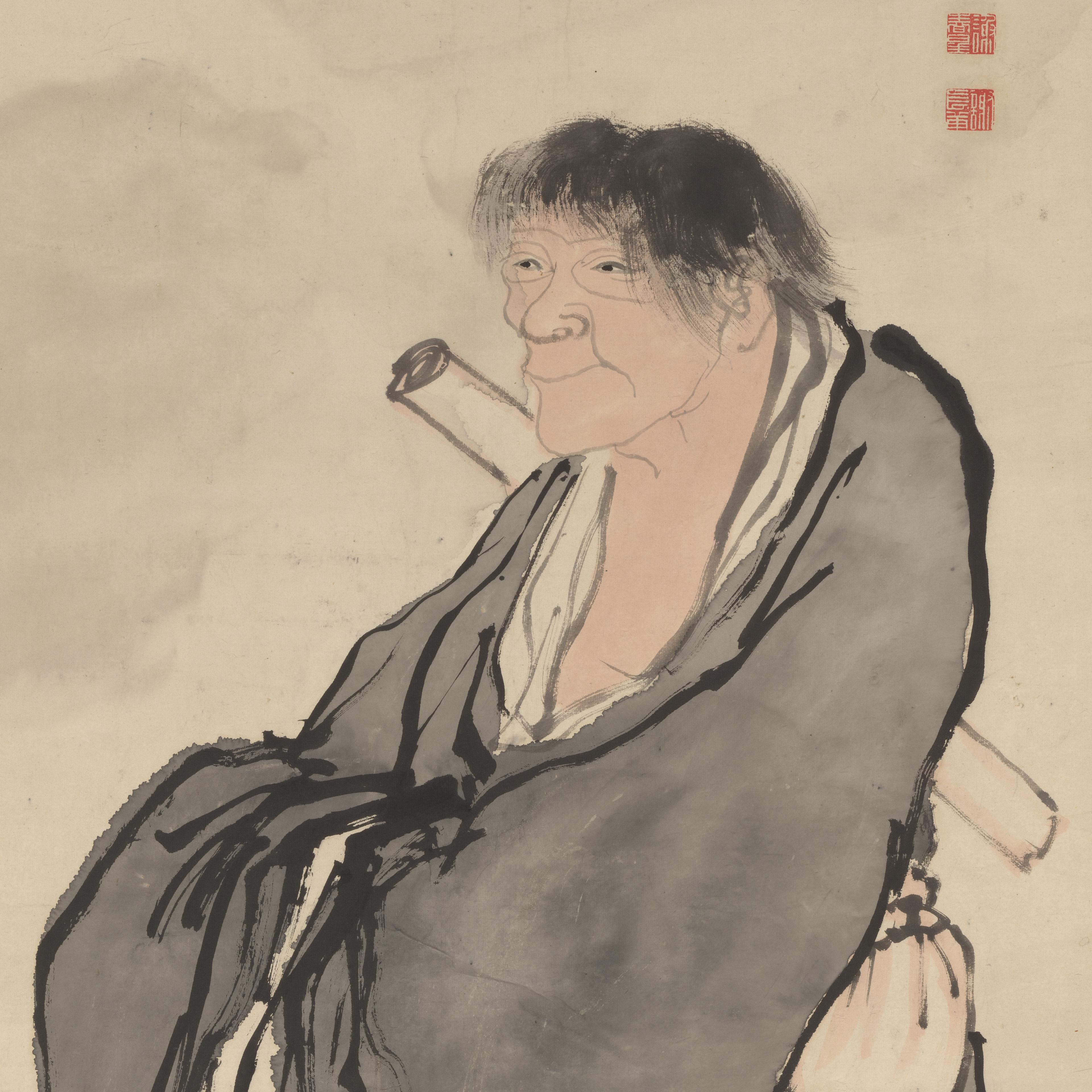Japan
12th century
Unidentified artist
12th century
Unidentified artist
12th century
Emperor Shirakawa
12th century
Japan
ca. 1175
Japan
14th–15th century
Japan
13th–14th century
Unidentified
ca. 1350
Minamoto Ienaga
13th century
Nijō Tameyo
early 14th century
Fujiwara no Sadayori
early 12th century
Kodai no Kimi
late 11th century
Fujiwara Akisuke
13th century
Japan
12th century
Japan
12th century
China
Fujiwara no Yukinari
mid- to late 11th century
Fujiwara no Mototoshi
ca. 1116–22
Japan
18th century
Tonna (Ton’a)
ca. 1368–69
Emperor Godaigo
early 15th century
Jōben
early 14th century
Unidentified artist
15th century
Japan
18th century
Unidentified painter and calligrapher
1669
Prince-Abbot Ryōshō
late 17th century
Hon'ami Kōetsu
early 17th century
Japan
ca. 1250
Japan
late 12th–13th century
Japan
late 12th–13th century
Japan
late 11th to early 12th century
Japan
mid-11th century
Japan
mid- to late 14th century
Japan
12th century
Japan
late 12th–mid-13th century
Zekkai Chūshin
ca. 1380s–1405
Zekkai Chūshin
ca. 1380s–1405
Motsurin Jōtō (Bokusai)
ca. 1480–92
Japan, Ryūkyū Islands
17th century
Ichidon Shōzui
1425
Japan
16th century
Musō Soseki
early to mid-14th century
Ōsen Keisan
late 15th century
Japan
second half 18th century
Ikkyū Sōjun
late 15th century
Ikkyū Sōjun
late 15th century
Japan
1278
Sesson Shūkei
ca. 1555–61
Japan
15th–16th century
Shūsei
late 15th century
Ogawa Haritsu (Ritsuō)
first half 18th century
Unidentified artist
Kanzan and Jittoku: probably 14th century; Kannon: probably 15th century
Unkoku Tōeki
first half 17th century
Kano Naizen
Takuan Sōhō
early 17th century
Intan
1291
Japan
16th cantury
Iizuka Hōsai II
ca. 1910s
Jiun Onkō
late 18th century
Mori Ransai
Jiun Sonja
ca. 1776–83
Gan Ku
late 1770s–early 1780s
Jiun Onkō
late 18th century
Jakugon Taijō
mid-18th century
Okada Hankō
first half 19th century
Ryōkan Taigu
early 19th century
Soga Shōhaku
ca. 1760
Ryōkan Taigu
early 19th century
Ryōkan Taigu
after 1816
Sakaki Hyakusen
1750
Ryōkan Taigu
early 19th century
Yamamoto Chikuryūsai I
first half 20th century
Tanabe Chikuunsai I
1922
Eiraku Hozen
first half 19th century
Tanabe Chikuunsai I
ca. 1900–20
Ryōkan Taigu
early 19th century
Japan
mid-17th century
Maruyama Ōkyo
1770
Kawahigashi Hekigotō
1929
Konoe Sakihisa
late 16th–early 17th century
Multiple artists/makers
1691
Emperor Go-Yōzei
early 17th century
Studio of Kano Takanobu
Konoe Nobutada
early 17th century
Unidentified artist
early 17th century
Unidentified
early 17th century
Nonomura Ninsei
17th century
Kojima Sōshin
Ogata Sōken
1651
Kojima Sōshin
1657
Unidentified
ca. 1670–80
Unidentified artist
mid- to late 17th century
Unidentified
ca. 1655–61
Japan
mid-17th century
Unidentified
early 17th century
Sake Cup with Scenes from the Noh Plays Pine in the Winds, Yōrō Falls, and The Tengu of Mount Kurama
Shomosai
first half 19th century
Sake Cup with Scenes from the Noh Plays Pine in the Winds, Yōrō Falls, and The Tengu of Mount Kurama
Shomosai
first half 19th century
Sake Cup with Scenes from the Noh Plays Pine in the Winds, Yōrō Falls, and The Tengu of Mount Kurama
Shomosai
first half 19th century
Japan
early 18th century
Unidentified artist
late 17th century
Japan
18th century
Tosa School
early 17th century
Tosa School
Ono no Ozū (Ono no Tsū)
early 17th century
Japan
ca. 1690–1750
Iwasa school
late 17th–early 18th century
Yinyuan Longqi (Ingen Ryūki)
1671
Maeda Chikubōsai I
1935
Yinyuan Longqi (Ingen Ryūki)
late 17th century
unidentified artist
Mu'an Xingtao (Mokuan Shōtō)
1676
Japan
early 18th century
Baisaō
1760
Hayakawa Shōkosai I
ca. 1877–80s
Jifei Ruyi (Sokuhi Nyoitsu)
17th century, after 1661
Multiple artists/makers
late 17th century
Hayakawa Shōkosai III
1920
Jakushitsu Genkō
mid-14th century
Shōno Shōunsai
ca. 1960s–70s
Tōkei Sōboku
late 15th–early 16th century
Ikeda Iwao
2016
Raku Ichinyū
late 17th century
Hata Shunsai III
2020
Japan
late 16th century
Japan
late 16th century
Japan
mid-19th century
Seigan Sōi
mid 17th century
Saitō Motonari
Nindō Sōen
1803
Feiyin Tongrong
mid-17th century
Eiraku Tokuzen
late 19th century
Yinyuan Longqi (Ingen Ryūki)
carved 1741
Shōun Genkei
1688–95
Eiraku Tokuzen
second half 19th century
Eiraku Tokuzen
second half 19th century
Yiran Xingrong (Itsunen Shōyū)
Jifei Ruyi (Sokuhi Nyoitsu)
1665
Nanyuan Xingpai (Nangen Shōha)
1666
Yosa Buson
1775
Suemura Shōbun
ca. 1950–70s
Japan
first half 19th century
Yosa Buson
Matsumura Goshun
ca. mid-1780s
Japan
late 16th–early 17th century
Japan
early 17th century
Matsumura Keibun
Rai San’yō
ca. 1830s
Japan
second half 19th century
Kanō Isen’in Naganobu 狩野伊川院栄信
1823
Tomioka Tessai
ca. 1890
Gion Nankai
ca. late 1730s
Ike no Taiga
Yanagisawa Kien
1750–58
Yanagisawa Kien
ca. 1750–58
Aoki Mokubei
1820s
Aoki Mokubei
early 19th century
Urakami (Uragami) Gyokudō
ca. 1815–20
Hayakawa Shōkosai I
1891
Japan
early 19th century
Wada Waichisai I
ca. 1890–1901
Seifu Yohei III
Tanomura Chokunyū
1903
Yosa Buson
early 1770s
Iizuka Hōsai II
1911
Japan
late 18th–first half 19th century
Multiple artists/makers
1803
Totoki Baigai
1800
Nakaji Sadatoshi
Kishi Tengaku
1751
Kawamura Bunpō
1811
Kawamura Bunpō
Rai San’yō
1824
Okamoto Hansuke (Mumei)
1640
Kameda Bōsai
1816
Ike no Taiga
Murase Kotei
1803
Tanomura Chokunyū
Tomioka Tessai
19th century
Hara Zaichū
1829
Aoki Shukuya
late 18th century
Ike no Taiga
1765
Aoki Shukuya
ca. 1794
Tsubaki Kakoku
1844
Okura Ryūzan
ca. 1840
Tanomura Chokunyū
1881
Okuhara Seiko
1899
Watanabe Kazan
1820s
Tani Bunchō
Kameda Bōsai
1821
Go Shun (Matsumura Gekkei)
ca. after 1780
Nakabayashi Chikutō
1821
Aoki Shukuya
Murase Kotei
1799
Japan
late 18th–early 19th century
Japan
late 18th–early 19th century
Itō Ryūgai
Akimoto Shatei
1920
Kondō Kōichiro
late 1920s
Kiyomizu Rokubei V
Hashimoto Dokuzan
1929
Kondō Yūzō
ca. 1950
Kohei Nawa
2011
Inoue Yūichi
1966
